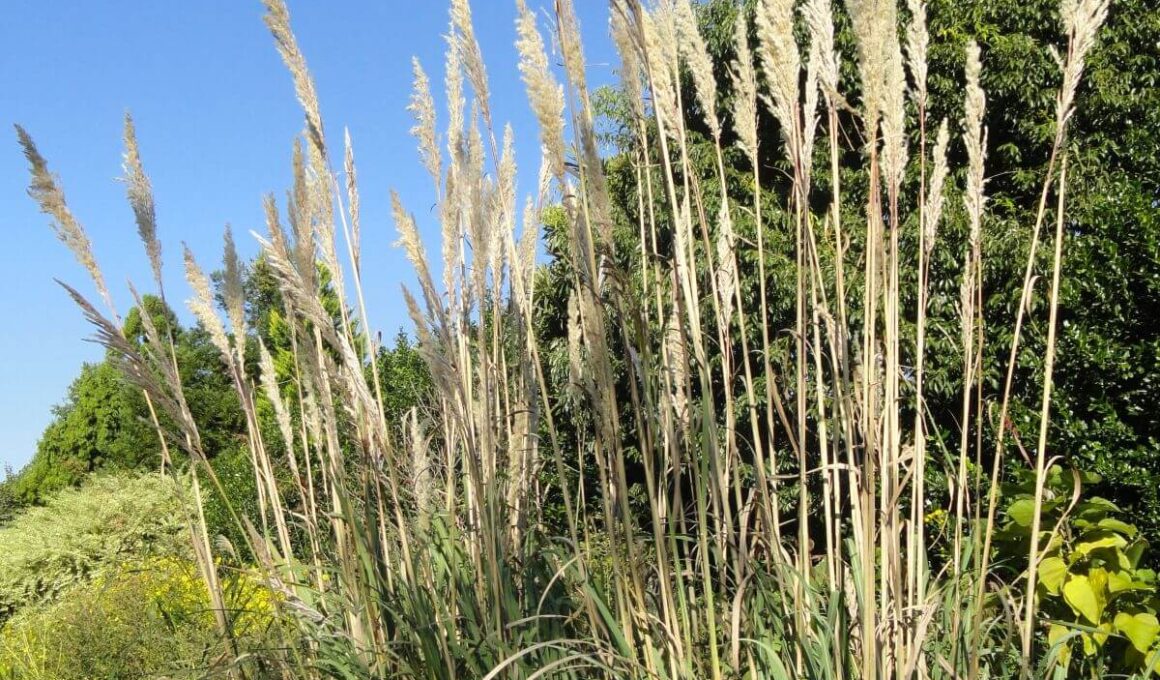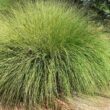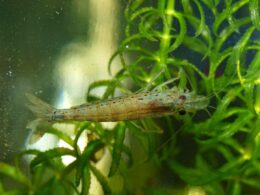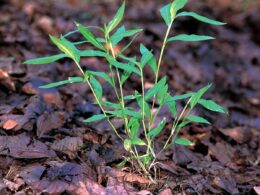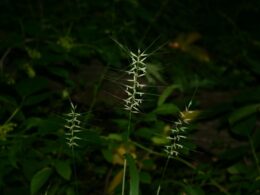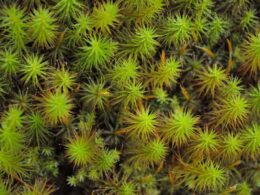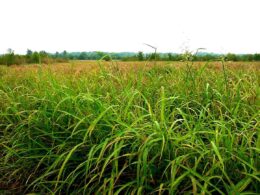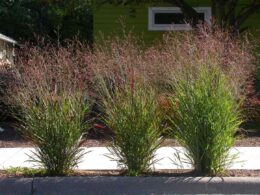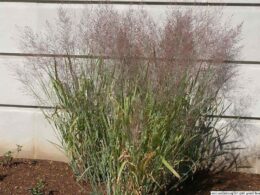What Is Ravenna Grass? Species and Origin
Ravenna grass (Tripidium ravennae, synonyms: Saccharum ravennae and Erianthus ravennae) is a type of perennial grass that is native to Southern Europe, Western Asia and South Asia. It’s been introduced to North America, where it’s an invasive species and sometimes a troublesome weed.
The grass blooms in the spring and summer, producing tall flower spikes covered in silky hairs. For this reason, it’s sometimes called plume grass. It has long, thin leaves that grow in clumps and reach 4 to 5 feet in length. Together with the inflorescences, the plant can grow up to 13 feet tall!
Saccharum Ravennae as an Ornamental Grass
Ravenna grass is often used as an ornamental grass, as it’s drought-tolerant and relatively low-maintenance. It can also be used for erosion control, as its deep roots help to stabilize the soil. You can find it in nurseries under the name “hardy pampas grass.” That’s because it’s a good substitute for pampas grass in northern climates.
This grass is tolerant of most soil types, including clay and sand. It’s naturally found in marshes and on riverbanks, so it has also adapted to high moisture levels. However, it grows best in full sun and well-drained soil.
Ravenna grass can be propagated by seed or division – it’s so easy to grow that it often spreads as a weed. Once established, it’s relatively easy to care for and requires little fertilizer or watering.
Ravenna Grass as an Invasive Plant
While ravenna grass is prized by some gardeners, it’s considered to be a weed in many parts of the United States. It’s on the list of Class A noxious weeds in Washington, for example, which means that it’s required by law to be controlled and eradicated.
This grass is invasive because it spreads so easily. The seed heads are light and fluffy, so they can be carried long distances by the wind. Once ravenna grass takes root, it’s hard to get rid of – the deep roots make it difficult to pull up, and it can quickly spread to form a dense mat.
This plant is very competitive and can crowd out other plants in your garden. It also produces a lot of pollen, which can be a problem for people with hay fever or asthma.
If you live in an area where ravenna grass is considered to be a weed, it’s best to avoid planting it in your garden. If you already have it, you’ll need to take active steps to control it and prevent it from spreading.
How Fast Does Ravenna Grass Grow?
Ravenna grass is a fast-growing plant. Under ideal conditions, it can grow up to 3-5 feet in a single season! This makes it difficult to control, as it can quickly spread to form a dense mat. And in 2-5 years, it will reach a height of 10 feet or more. To prevent this grass from spreading, it’s important to cut it back before the seed heads form in late summer or early fall.
And that’s all there is to know about ravenna grass! Whether you consider it to be a weed or an ornamental grass, it’s definitely a plant that’s worth learning more about.
Image source: Daderot via wikipedia Public Domain





